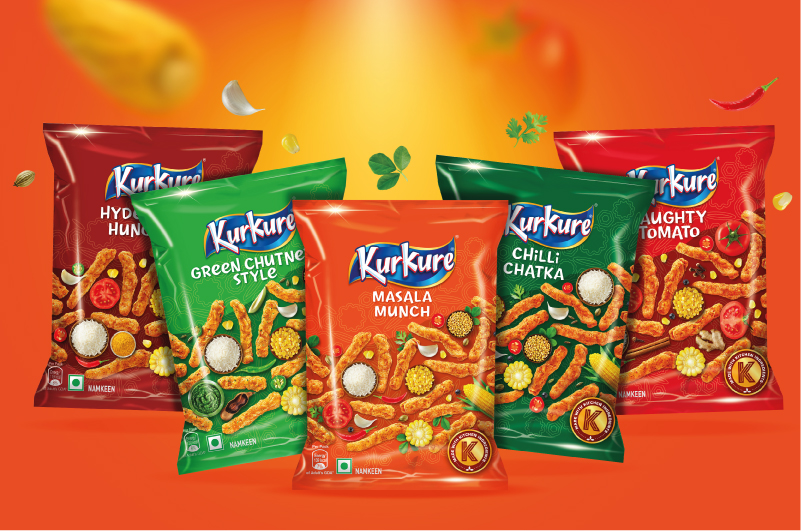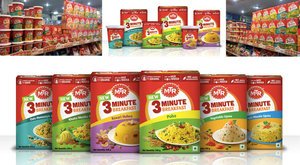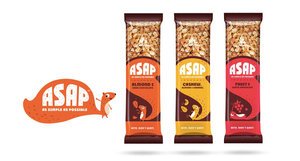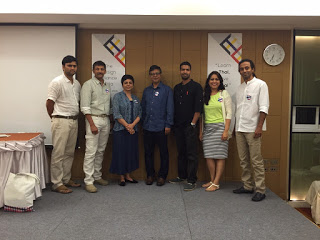Printweek India talks to the co-founder of Elephant, a design led innovation company that’s been around for three decades
2019 would mark the 30th birthday of Pune based Elephant which laid its foundation in 1989 with three NID (National Institute of Design) graduates as its co-founders– Ashwini Deshpande, Ashish Deshpande and Partho Guha. Elephant has had a truly phenomenal journey, marked by its work for some of the biggest brands in the country, various awards, and presence in some of the biggest forums about design across the world.
For this month’s Design Dialogue, we have a conversation with Ashwini Deshpande about Elephant’s trajectory so far, some of their key projects including their recent branding and packaging work for Kurkure and Witlinger, their experience of working with start-ups, the benefits of having interns from different countries, and their Singapore operation.
Edited excerpts:
Q :
Elephant has been in the Indian design landscape for three decades now. What are some of the most crucial changes you have seen over the years?
It has been a long and exciting journey, every step of the way. We started Elephant with a dream to create the ‘big picture’ of design in India.
When we started out in 1989, the Indian creative industry was limited to advertising agencies. The most challenging task was to demonstrate a genuine professional design practice that helps businesses grow.
There was no organised, scalable, and professionally managed design consulting at that point. There were just two design schools (NID Ahmedabad and IIT-IDC Mumbai). The fact that ‘design’ and ‘design thinking’ could add value to a bottom-line was not experienced by any business house.
I believe there are over 75 established design schools in India now and the number is growing as we speak. Every global media network has brought their design consulting arm to India; some of them have been around for over ten years now. Every communication agency has an in-house design team, all IT giants have large in-house design teams, and many conglomerates have design teams as part of their R&D set ups. There are hundreds of boutique design agencies mushrooming all around. However, even after 29 years since the start of Elephant, there are only a handful of design practices with any scale. So despite all our consistent efforts to demonstrate the value of design intervention for business growth, design is yet to become a mandatory, nation-wide phenomenon.
I remember the fascinating lessons in blocks, typesetting and letterpress printing at NID in the 80s. A lot of the stationery used to be screen printed in the early days. Even short run brochures or exhibition panels used to be screen printed. Then came the large format digital printing in the mid-90s. From the time of cut and paste artworks to limited editions to personalised print-runs, one has seen a complete transformation of the print business. With digital distribution replacing a lot of print communication, we are in an interesting era of creating multi-sensorial, multi-media experiences.
Q :
As the studio finishes its 30th year next year, what has been the biggest achievement of Elephant so far according to you?
I think our consistent efforts to establish the business of design in India for a sustained period is an achievement in itself. The large economic changes, liberalisation, recessions, presence of global agencies, mushrooming of boutique agencies, and rapid changes in technology and media – we have made the most of all these and have managed to create a positive impact through design in almost every business domain we have worked in.
Q :
How do you choose brands/projects to work for? Are there any particular criteria you follow?
We have a very simple method. Earning, learning and excitement form the three most important principles for selection. When we get a project or an engagement query, there must be a resounding nod against at least two of the three principles. Because we are a ‘learning’ organisation and we believe feeling excited about solving a certain problem directly reflects on the creative quotient of the solution.
Q :
Packaging design has always been a very strong part of Elephant's portfolio. This year too, you did some interesting packaging design revamp for Witlinger beer and Kurkure. Tell us a bit about both these projects.
To rebrand a craft beer was like a dream project for the creative team. While many craft beers try to keep their origins ambiguous, Witlinger wanted to convey its British origin unabashedly. We decided to leave the clichéd British iconography of the Tower Bridge or Big Ben and found a true hero in the British bulldog. To highlight the distinct personality of each crafted brew, we decided to bring various facets of the Bulldog's persona to life. The new design with British bulldog as a mascot characterises Witlinger's true British origin and conveys a message of being bold - with a lot of attitude and honest fun.
Kurkure team handed us three significant tasks through the packaging revamp exercise. The first one was to enhance brand leadership, relevance and distinctiveness. The second was to build an architecture that can create a strong differentiation for categories. The last one was to help consumers navigate the shelf and pick the right snack of their choice. When you are working on one of India’s most loved brands, you have to listen to the fan base and understand the degree of shift possible. You also have to understand the nuances involved in designing for a very large print run at multiple locations with varying infrastructures.
The concept was built around focusing on the ingredients to enhance the taste appeal with a larger than life shape of the product, providing the backdrop for a play between products and ingredients. Every variant is called out in custom designed typography that also makes it own-able. The back of the packs are brought to life with custom drawn illustrations about turning mundane encounters into fun moments by sharing the snack. Such large impact exercises become more interesting as we get to interact and learn from global brand custodians.
Q :
Could you tell us a bit about your Singapore operations? What kind of brands do you work with there?
Our business model in Singapore is very different. In India, we have a mix of design research, brand and design consulting, product design and innovation consulting. In Singapore, however, we mostly take up consulting projects around insights farming leading to innovation strategy. Many of them don’t require pure design input. And the ones that do culminate into design projects are handled at our Pune studios.
(L-R) Partho Guha, Ashwini Deshpande & Ashish Deshpande
Q :
You were recently announced as a jury member of the Young Guns 16 competition. What are you most looking forward to while judging? Also, in general, what are some of the key qualities you look for in the work of young designers/interns who approach Elephant for mentorship?
I am always curious to know what young designers are thinking or doing. While judging any work, I am more focused on the idea. Is it outstanding, aligned to brief, original, and feasible? Once I am satisfied with these, I look for the degree of detailing and the quality of execution.
While looking at portfolios of young designers, I like to find passion bordering on obsession to convey the idea in its most powerful form. If I find someone with extraordinary skills, I may get impressed, but I rarely hire anyone for just their skill.
Q :
Elephant has interns from different countries. In what specific ways, is that beneficial?
Yes. We have had interns from France, The Netherlands, USA, Singapore, Mexico, Turkey, and of course every Indian state. The interns bring immense positive energy and manage to enliven the entire team. They also bring a taste of their culture, their educational ethos, and a sense of exploration.
In turn, we believe that Elephant is like an institution that changes the way they think about the profession and creativity. Going forward, we offer full-time positions to some of our brightest interns once they complete their education as there is a familiarity that reduces their adjustment time.
Q :
Elephant also works with a lot of startups. How is the experience different from working with established brands? Personally, which one do you enjoy more?
The Indian start-up landscape is very vibrant at the moment. And the founders who understand ‘design’ as a crucial differentiating factor tend to approach design consultants at an early stage. We have worked with quite a few start-ups in the past four to five years, including Paper boat beverages, Fingerlix ready-to-eat foods, Too Yumm snacks, Epigamia Greek Yogurt, ASAP Bars, Witlinger Beer, Plezmo intelligent play-blocks, SynPhNe stroke recovery system, and Healthcube Diagnostics.
Start-ups are nimble, so they take quick decisions and are not worried about failing and starting again. On the other hand, established businesses tend to think in a linear but robust way; they take fewer risks and have long launch cycles. Both are rewarding learning experiences in their own way and we tend to transfer our knowledge to both sides as well.





















































